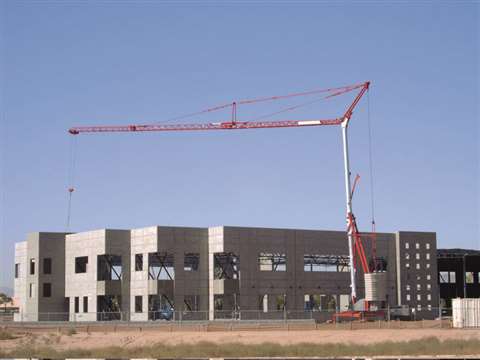TCNA Preview: Towers in Miami
16 April 2018
The challenges of using tower cranes in hurricane-prone areas will be among the topics covered by the first Tower Cranes North America (TCNA) conference, to be held in Miami on 18 and 19 June. It is organised by International Cranes and Specialized Transport and American Cranes & Transport (ACT).
Two presentations will address hurricane risks directly, while other presentations will cover topics as diverse as the impact on tower cranes of building information modelling (BIM) and virtual design and construction (VDC) techniques; advice from the Federal Aviation Administration (FAA) on obstruction issues close to airports; the potential benefits of fibre ropes; and hook cameras and other operator aids.
Perhaps inevitably, following the devastation wreaked by hurricanes in Florida and the Caribbean last year, it is the impact of severe weather on tower crane operations that will be a focus of the event.
Frank Bardonaro, chief operating officer at Maxim Crane Works – the company that owned three cranes in Miami damaged by Hurricane Irma last year – will review the lessons learned from the events of last September. Bardonaro will also report on the massive Brickell City Centre project in Miami, where Maxim supplied several tower cranes.

Weather report
Also addressing extreme weather will be Peter Juhren, vice president of operations at rental company Morrow Equipment, and chairman the task force established by the SC&RA to look into the severe weather issue. Juhren will use his speech to outline the task force’s conclusions.
The legal and contractual issues surrounding tower cranes will be addressed by Michael Rubin, a partner at law firm Goldberg Segalla. He will consider how crane users and owners – whether contractors or rental companies – can minimise the contractual risks of operating cranes.
These risks are a topical subject in the crane industry now, and will be addressed by the keynote speaker, Christian Chalupny, Morrow Equipment president. “I want to talk about the regulatory environment, and the issues of liabilities and risks,” he says. “Tower crane rental companies have to be very careful about how risk is shared between the different players – rental companies, contractors, developers, owners. There are high risks, especially in downtown areas. That is a hot topic for us.”
Chalupny, who has 35 years of experience in the tower crane industry, will also consider some of the more positive aspects of the sector. “There is a lot of potential for our industry,” he continues. “Tower cranes are more heavily used in Europe and Asia, so we still have the potential to grow in North America, offering towers where mobile or crawler cranes are being used.”

Kelly Hadland of Compass Equipment will discuss the benefits of self-erecting tower cranes. The photo shows a Compass-owned Potain Igo 50
Different types
That lack of maturity is reflected in the types of tower cranes used in the USA, a prime example being the small self-erecting towers that are popular in Europe but seldom seen in the USA. Kelly Hadland, president at Arizona-based Compass Equipment, will discuss his experiences in introducing self-erectors to several western States of the USA.
Contractors all over the world are also wrestling with the implementation of nuilding information modeling. How this overlaps with tower cranes in the USA will be discussed by JR Moran, director of crane operations at B&G Equipment & Supply, a division of Brasfield & Gorrie, one of the largest general contractors in North America. He will co-present with Russ Gibbs, director of innovation at Brasfield & Gorrie.
“My collaboration with Brasfield & Gorrie’s Virtual Design and Construction (VDC) team is generating opportunities for improved co-ordination in the crane and hoisting scope of work,” says Moran. “By overlaying in-house parametric crane models with project models and drone data, project teams are seeing impact in the areas of mobilisation safety, tieback coordination, and efficiency of hoisting design.”
The full conference programme can be found at: www.khl-tcna.com






